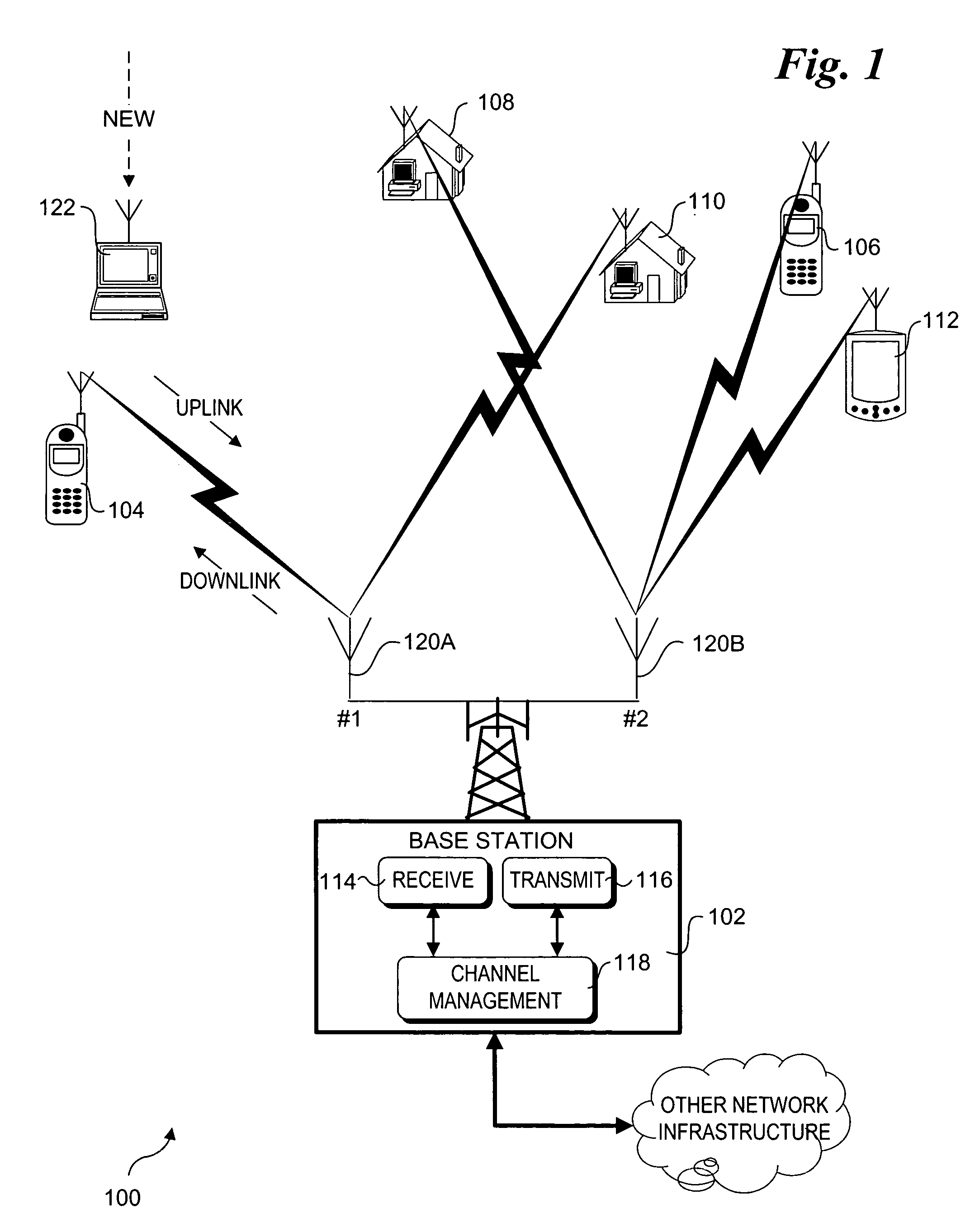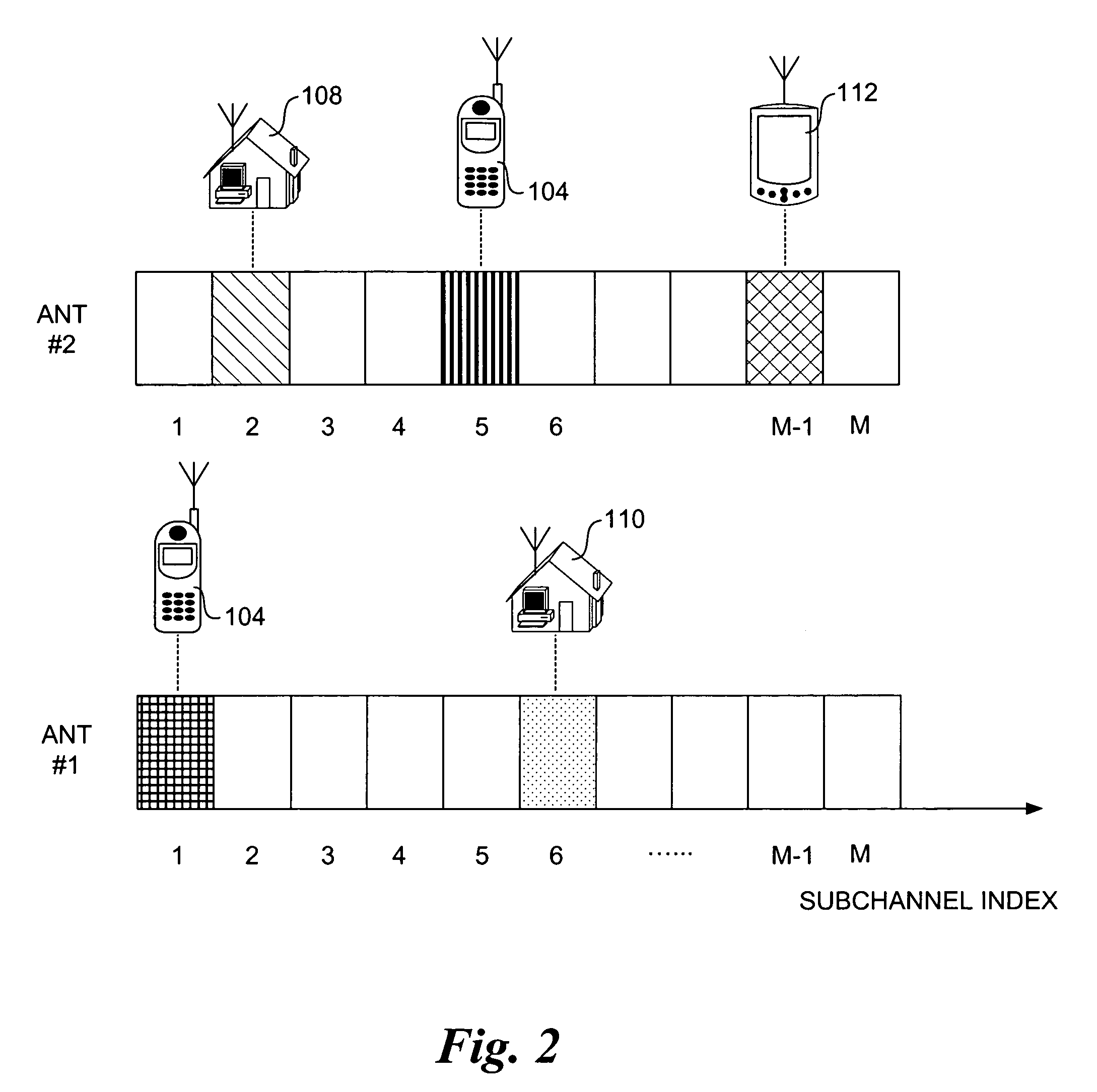Method and system for switching antenna and channel assignments in broadband wireless networks
a wireless network and channel assignment technology, applied in the field of communication systems, can solve the problems of complex signal processing and decoding, high system complexity and cost, and often means of mimo or beamforming
- Summary
- Abstract
- Description
- Claims
- Application Information
AI Technical Summary
Benefits of technology
Problems solved by technology
Method used
Image
Examples
Embodiment Construction
[0021]The marriage of OFDMA and spatial processing provides powerful platform for multiuser broadband communications. The present invention describes a method, apparatus, and system for easy integration of OFDMA with antenna arrays of various configurations. The method and apparatus allows multiuser diversity to be exploited with simple antenna operations, therefore increasing the capacity and performance of wireless communications systems. In one embodiment, Channel characteristics indicative of signal reception quality for downlink or bi-directional traffic for each channel (e.g., OFDMA subchannel / antenna resource combination) are measured or estimated at a subscriber. Corresponding channel characteristic information is returned to the base station. Channel characteristics information may also be measured or estimated for uplink or bi-directional signals received at each of multiple receive antenna resources. The base station employs channel allocation logic to assign uplink, down...
PUM
 Login to View More
Login to View More Abstract
Description
Claims
Application Information
 Login to View More
Login to View More - R&D
- Intellectual Property
- Life Sciences
- Materials
- Tech Scout
- Unparalleled Data Quality
- Higher Quality Content
- 60% Fewer Hallucinations
Browse by: Latest US Patents, China's latest patents, Technical Efficacy Thesaurus, Application Domain, Technology Topic, Popular Technical Reports.
© 2025 PatSnap. All rights reserved.Legal|Privacy policy|Modern Slavery Act Transparency Statement|Sitemap|About US| Contact US: help@patsnap.com



